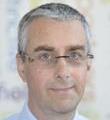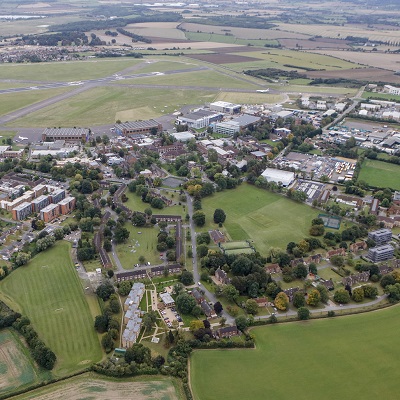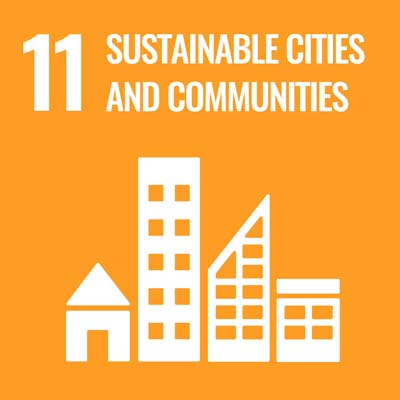Overview
- Start dateOctober
- DurationOne year full-time
- DeliveryTaught modules 50%, Group project 10%, Individual research project 40%
- QualificationMSc
- Study typeFull-time
Who is it for?
The Airport Planning and Management MSc is suitable for students with a degree in diverse areas of engineering, economics, business studies, geography and social sciences, and with demonstrable interest in the airport industry. You will join a diverse cohort of individuals with a passion for aviation and a drive to build sustainable air transport solutions to connect the world.
This course covers a core area of expertise in airport planning and management, while enabling you to specialise in appropriated subject areas. This flexibility means that you may tailor your learning experience to your own interests and career aspirations.
Why this course?
In the Airport Planning and Management MSc you will develop transferable management, communication, teamwork and research skills, and you will attain specific competencies in the airport industry, such as:
- A systematic understanding of relevant international and national regulations and the ability to explain their effects on airport business, planning, design, operations and safety management decisions.
- A critical awareness of the key issues that affect users of airport facilities and the ability to explain the impact of their commercial pressures, strategic decisions and priorities on airport business, planning, design, operations and safety management decisions.
- A systemic perspective on the regulatory constraints and commercial and environmental imperatives to identify, analyse and design solutions in order to address contemporary issues within the context of airport planning and management.
Cranfield University is one of the select few universities in the world to run an English language Master's course in airport planning and management, and the only UK university campus with a fully operational airport. Achieving this highly relevant and globally respected degree will enable you to stand out in a competitive employment market.
Cranfield's Centre for Air Transport Management combines a wealth of practical expertise with extensive research, consultancy and teaching experience in one centre of excellence. We have been providing postgraduate education for almost sixty years. You can be sure that your qualification will be valued and respected by employers throughout the world.
Cranfield University is very well located for visiting students from all over the world. It offers a range of library and student wellbeing facilities and resources to support your studies. This MSc programme benefits from students from a wide range of cultural backgrounds which significantly enhances the learning experience for both staff and students.
Informed by Industry
The Airport Planning and Management MSc is guided by an Industry Advisory Board to ensure the course maintains its unique characteristics and meets the continuously evolving challenges of the airport industry and associated sectors. This board comprises senior representatives from leading airport consultancies, airport operators and academic institutions.
Course details
Ten compulsory taught modules, two of which elective, a Group Project and an Individual Research Project.
Course delivery
Taught modules 50%, Group project 10%, Individual research project 40%
Group project
In April students are divided into groups of seven to ten, and asked to solve a current airport planning and management challenge. The group project draws upon the learning from the taught modules and applies it to real-life simulation. Each member is required to take responsibility for a key area, for example, market analysis, capital expenditure forecast or terminal design. The group submits a report of their findings and recommendations and delivers a presentation to staff, students and industry experts.
Projects are usually supported by industry and potential future employers value this experience. Industry involvement is an integral component to the group project, to give you first-hand experience of working within real life challenging situations.
Previous Group Projects have included:
- Evaluating the business case for extending the runway at Birmingham Airport
- The preparation of development plans for two new airports in South-West England
- Designing a new passenger terminal for Leeds-Bradford International Airport.
Individual project
The individual research project is the single largest component of this course and is an opportunity to study a problem in detail. Sponsoring organisations may co-operate in the choice of a suitable subject. Project topics vary widely and are often based on your area of interest. The individual research project component typically takes place between April and August.
Previous individual research projects have included:
- An analysis of the hubbing strategy of Air France/KLM at Amsterdam Schiphol airport
- The implications of secondary slot trading on airport revenues
- Air traffic distribution in a multi-airport environment; the Mumbai metropolitan region
Modules
Keeping our courses up-to-date and current requires constant innovation and change. The modules we offer reflect the needs of business and industry and the research interests of our staff and, as a result, may change or be withdrawn due to research developments, legislation changes or for a variety of other reasons. Changes may also be designed to improve the student learning experience or to respond to feedback from students, external examiners, accreditation bodies and industrial advisory panels.
To give you a taster, we have listed the compulsory and elective (where applicable) modules which are currently affiliated with this course. All modules are indicative only, and may be subject to change for your year of entry.
Course modules
Compulsory modules
All the modules in the following list need to be taken as part of this course.
Air Transport Environmental Planning
| Aim |
|
|---|---|
| Syllabus |
|
| Intended learning outcomes |
On successful completion of this module you should be able to:
|
Air Transport Financial Management
| Aim |
|
|---|---|
| Syllabus |
|
| Intended learning outcomes |
|
Air Transport Market Analysis and Forecasting
| Aim |
Obtain the theory, knowledge and skills of ‘demand forecasting’, and demonstrate their applicability in an air transport context.
|
|---|---|
| Syllabus |
|
| Intended learning outcomes |
On successful completion of this module you should be able to:
|
Airport Business and Economics
| Aim |
|
|---|---|
| Syllabus |
|
| Intended learning outcomes |
|
Airport Design
| Aim |
|
|---|---|
| Syllabus |
|
| Intended learning outcomes |
On successful completion of this module you will be able to:
|
Airport Operations
| Aim |
|
|---|---|
| Syllabus |
• Airside and landside operations • Airport social media • Control of emergencies and contingency planning • Airport security • Airport safety management systems and risk assessment • Airport customer service |
| Intended learning outcomes |
On successful completion of this module you should be able to:
|
Airport Strategic Planning
| Aim |
This module aims to develop your expertise in airport strategic planning by enhancing your ability to strategically analyse the complex airport operating environment, including airline dynamics, policy constraints and competitive forces, enabling you to successfully tackle real-world airport strategic planning problems.
|
|---|---|
| Syllabus |
|
| Intended learning outcomes |
On successful completion of this module you should be able to:
|
Geopolitics and International Aviation Law
| Aim |
|
|---|---|
| Syllabus |
|
| Intended learning outcomes |
On successful completion of this module you will be able to:
|
Elective modules
Two of the modules from the following list need to be taken as part of this course.
Air Transport Marketing
| Aim |
To provide a sound comprehension of how marketing concepts and theories can be applied to the airline industry, considering its unique nature. |
|---|---|
| Syllabus |
|
| Intended learning outcomes |
On successful completion of this module you will be able to:
|
Airline Strategic Management
| Aim |
|
|---|---|
| Syllabus |
|
| Intended learning outcomes |
On successful completion of this module you will be able to:
|
Aviation Safety Management
| Aim |
|
|---|---|
| Syllabus |
|
| Intended learning outcomes |
On successful completion of this module you will be able to:
|
Digital Aviation Management
| Aim |
|
|---|---|
| Syllabus |
|
| Intended learning outcomes |
On successful completion of this module you will be able to:
|
Regional Aviation
| Aim |
|
|---|---|
| Syllabus |
|
| Intended learning outcomes |
On successful completion of this module you will be able to:
|
Teaching team
You will be taught by Cranfield's Centre for Air Transport Management's leading experts and recognised external specialists. This multi-disciplinary group includes a unique blend of airport economists, transport geographers, marketing specialists, architects, historians, and civil, aeronautical and industrial engineers with strong publication records and vast industry experience. The course director for this programme is Dr Edgar Jimenez Perez.
Your career
After completing the Airport Planning and Management MSc, you will be in a unique position to respond to the need for talented individuals to drive the transition towards a sustainable air transport system. The course offers varied and exciting career possibilities from planning and management consultancies that advise airports and authorities across the world, airport designers, developers and operators, to air transport infrastructure, service and travel providers, including for new forms of air transport such as advanced air mobility.
Our passion for the areas of expertise we operate in, and our hands-on relationship with industry are unparalleled. This is recognised globally by potential employers and we have a proven record of graduate employment across airports, consultancies and associated industries.
Previous graduates have secured employment within a range of roles:
| Airport Planner |
| Aviation Consultant |
| Operations Controller |
| Senior Airport Planner |
| Project Manager |
| Strategic Planning and Sustainability Specialist |
| Senior Design Manager |
| ORAT Coordinator |
Organisations that employ our graduates have included:
| Arup | Jacobs Consultancy |
| Mott MacDonald | AtkinsRéalis |
| Airbus | Manchester Airport Group |
| Korean Airports Corporation | Malaysian Airports |
| ICF International | Aviation Economics |
| Heathrow Airport | Group ADP – Aeroports de Paris |
We also provide access to our exclusive LinkedIn Cranfield University - Air Transport Group, which offers unrivalled networking and job opportunities.
Cranfield’s Career Service is dedicated to helping you meet your career aspirations. You will have access to career coaching and advice, CV development, interview practice, access to hundreds of available jobs via our Symplicity platform and opportunities to meet recruiting employers at our careers fairs. Our strong reputation and links with potential employers provide you with outstanding opportunities to secure interesting jobs and develop successful careers. Support continues after graduation and as a Cranfield alumnus, you have free life-long access to a range of career resources to help you continue your education and enhance your career.
How to apply
Click on the ‘Apply now’ button below to start your online application.
See our Application guide for information on our application process and entry requirements.

















